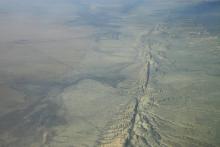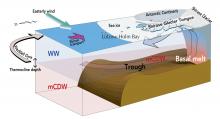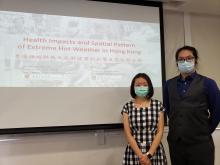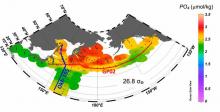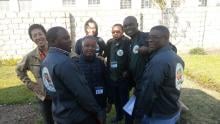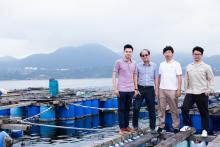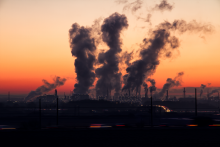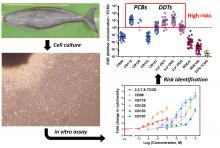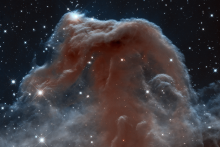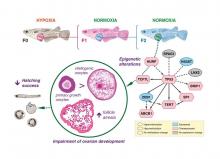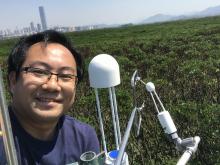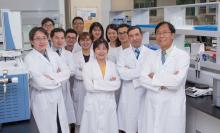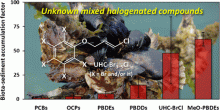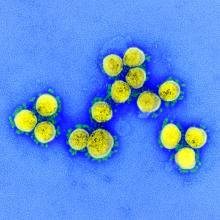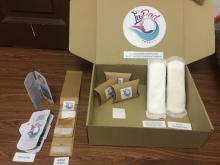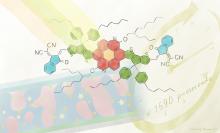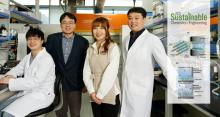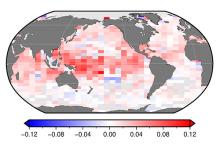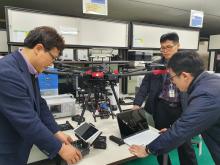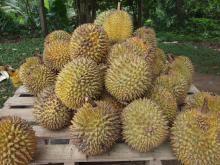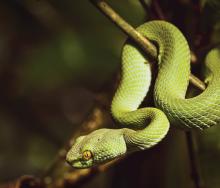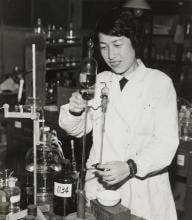Environment
News
01 Sep 2020
Researchers from the Earth System Science Programme at The Chinese University of Hong Kong (CUHK) have revealed that slow earthquakes, a new type of earthquake discovered about 20 years ago, follow similar scaling relations as regular earthquakes, e.g. rate of aftershocks and formula that relates an earthquake’s energy release with how long it lasts. This discovery opens a pathway for scientists to use these events as easy-to-study analogs to probe the physics governing the power and timing of devastating earthquakes, generating a clearer picture of how energy is released with time along faults.
24 Aug 2020
Ice is melting at a surprisingly fast rate underneath Shirase Glacier Tongue in East Antarctica due to the continuing influx of warm seawater into the Lützow-Holm Bay.
24 Aug 2020
Hong Kong has been experiencing hotter summers and more scorcher days in recent years due to climate change and heat island effect. Amid the increasing number of “hot nights”, it is found that consecutive “hot nights” are more detrimental to human health than “very hot days”, although the actual temperature does not reach the level of daytime, according to a collaborative research conducted by the Institute of Future Cities at The Chinese University of Hong Kong (CUHK), as well as researchers from the University of Hong Kong.
The research also identified that lack of urban greenery and poor air ventilation in a high-density context are factors that lead to more “hot nights” than “hot days” in some areas. The team suggests that better urban planning and building design are long-term mitigation measures.
07 Aug 2020
A group of researchers from three Japanese universities has discovered why the western subarctic Pacific Ocean, which accounts for only 6 percent of the world’s oceans, produces an estimated 26 percent of the world’s marine resources.
07 Aug 2020
Scientists have unveiled a correlation between high blood lead levels in children and methylation of genes involved in haem synthesis and carcinogenesis, indicating a previously unknown mechanism for lead poisoning.
28 Jul 2020
A decade ago, a fish feed pellet made from food waste was just a concept. Today, although still in its initial stages, it is a patented marketable product with many different benefits.
27 Jul 2020
Large improvements of air quality in China during the COVID-19 lockdown have been widely reported, but new research reveals that the two pollutants most harmful to human health, fine particulate matter (PM2.5) and ozone, were only slightly reduced.
20 Jul 2020
Environmental pollutants threaten the health of marine mammals. This study established a novel cell-based assay using the fibroblasts of a finless porpoise stranded along the coast of the Seto Inland Sea, Japan, to better understand the cytotoxicity and the impacts of environmental pollutants on the porpoise population. The results revealed that the concentrations of PCBs and DDTs which accumulated in the porpoise are likely to have an adverse effect at the cellular level.
17 Jul 2020
Scientists have found the interstellar organic matter could produce an abundant supply of water by heating, suggesting that organic matter could be the source of terrestrial water.
16 Jul 2020
A research led by the Department of Geography at Hong Kong Baptist University (HKBU) has revealed that the observed average moving speed (or translation speed) of tropical cyclones making landfall over the coast of China dropped by 11% between 1961 and 2017. These slow-moving tropical cyclones brought about 20% more local total rainfall on average when compared with fast-moving ones, resulting in greater flood risks in the region.
06 Jul 2020
Low oxygen levels in water (hypoxia) pose a significant threat to marine and freshwater ecosystems worldwide, as highlighted in the latest research findings of The Education University of Hong Kong (EdUHK) in an article titled “Low oxygen levels affect reproductive function in female fish – across multiple generations”, featured in Science for Environment Policy (Issue 536). This novel finding shows that hypoxia not only impairs reproduction in female fish (Oryzias melastigma), but the adverse effects can be passed on to their descendants in subsequent generations, posing a long-term threat to the sustainability of natural fish populations around the world.
02 Jul 2020
An international collaborative study led by Professor Derrick Yuk Fo Lai at The Chinese University of Hong Kong (CUHK), joined by top-tier scientists from around the world, has discovered that sustained methane emissions from the subtropical estuarine mangroves can reduce its climatic cooling effects by over 50%, over a period of 20 years. The team produced the world’s first-ever multi-year dataset of ecosystem-scale methane emissions from a subtropical estuarine mangrove based on the data collected at Mai Po Nature Reserve in Hong Kong, which points out that global warming and greater river runoff may lead to increasing methane emissions. The findings have recently been published in Global Change Biology, a top-tier journal in the field of biodiversity conservation and environmental science.
22 Jun 2020
The first State Key Laboratory of The Education University of Hong Kong (EdUHK) was opened in June 2018, in alignment with the University’s ongoing efforts to promote environmental studies as a discipline complementary to education. As a consortium member of the State Key Laboratory of Marine Pollution (SKLMP), the University’s role is to conduct pioneering research pertaining to solving imminent marine pollution problems that pose a significant threat to our environment and public health.
03 Jun 2020
The present study screened known and unknown organohalogen compounds present in mussel and sediment samples from Hiroshima Bay. The results provided scientific evidence that unknown mixed halogenated compounds are ubiquitous in the coastal environment and possess bioaccumulative potential as high as persistent organic pollutants.
27 May 2020
Scientists could gain insight into atypical sex development in vertebrates, including humans, by studying how nutrition affects sex changes in fish larvae.
25 May 2020
Wastewater could be used as a surveillance tool to monitor the invasion, spread and eradication of COVID-19 in communities.
06 May 2020
A biodegradable sanitary pad made from sago starch could add to efforts aimed at protecting the environment from plastic waste.

21 Apr 2020
Springer Nature Group commits to be net carbon neutral this year, as part of an ongoing reduction in emissions and broader responsible business programme.

21 Apr 2020
Communications Materials and Communications Earth & Environment join Springer Nature’s comprehensive portfolio of around 600 open access journals
05 Mar 2020
Molecular changes could improve the efficiency of next-generation photovoltaics.
28 Feb 2020
A recent study, affiliated with South Korea's Ulsan National Institute of Science and Technology (UNIST) has presenter in-depth study of the interaction mechanism between the lignin nanofilms.
26 Feb 2020
Policymakers will need to step up to the challenges caused by significant shifts in fish species distributions caused by climate change.
25 Feb 2020
From biomemory to implants, researchers are looking for ways to make more eco-friendly electronic components.

25 Feb 2020
An international team of researchers has found that there is cause for optimism for now as the global loss rate of mangrove forests is now less alarming than previously suggested.
22 Feb 2020
2 Gold, 3 Silver, 5 Bronze, and 2 Participation Awards have been bestowed upon South Korea's Ulsan National Institute of Science and Technology (UNIST) at this year's Samsung Humantech Paper Awards.
20 Feb 2020
A recent study, affiliated with South Korea's Ulsan National Institute of Science and Technology (UNIST) has unveiled a novel biomass conversion technology that can turn forestry biomass residues (i.e., sawdust from timber logging) into higher value fuels and chemicals.
30 Jan 2020
Water layering is intensifying significantly in about 40% of the world's oceans, which could have an impact on the marine food chain. The finding, published in the Journal of Geophysical Research: Oceans, could be linked to global warming.
29 Jan 2020
The technology analyzes water quality with drones and artificial intelligence to predict the level of algal bloom.
27 Jan 2020
Researchers at the International Islamic University Malaysia have developed biodegradable food packaging container featuring the skin of the durian fruit that can also be used as 3D printing filament.
21 Jan 2020
The relationship between body size and climate in lizards and snakes is more complex than originally thought.
Events
Sorry, no events coming up for this topic.
Researchers
Sorry, no researchers coming up for this topic.
- « first
- ‹ previous
- 1
- 2
- 3
Giants in history
Tetsuya Theodore Fujita (23 October 1920 – 19 November 1998) was a Japanese-American meteorologist who created the Fujita scale that classifies the strength of tornadoes based on damage to structures and vegetation.
Archana Sharma (16 February 1932 - 14 January 2008) conducted research into plant and human genetics that expanded the understanding of both botany and human health. In relation to botany, she uncovered the means by which asexually-reproducing plants evolve into new species.
Roseli Ocampo-Friedmann (23 November 1937 – 4 September 2005) was a Filipino-American scientist whose research focused on cyanobacteria and microorganisms that inhabit extreme environments.
Edgardo Dizon Gomez (7 November 1938 – 1 December 2019) was a Filipino marine biologist who recognized the need to protect marine resources, especially coral reefs, in the Philippines.
Anna Mani (23 August 1918 – 16 August 2001) was an Indian meteorologist who contributed significantly to the understanding of solar radiation, ozone and wind energy by developing a wide range of measurement tools. One of India’s pioneering female scientists, Mani excelled in the male-dominated area of meteorology and became the Deputy Director-General of the India Meteorological Department.
Võ Quý (1929 – 2017) was a Vietnamese ornithologist who studied the destruction of tropical forests and agricultural lands in Vietnam by Agent Orange, a herbicide used by the U.S. military during the Vietnam War. In addition to planning forest restoration projects, Quý rediscovered the rare eastern sarus crane, an endangered species that had vanished during the war.
Japanese geochemist Katsuko Saruhashi developed the first method and tools for measuring carbon dioxide in seawater


